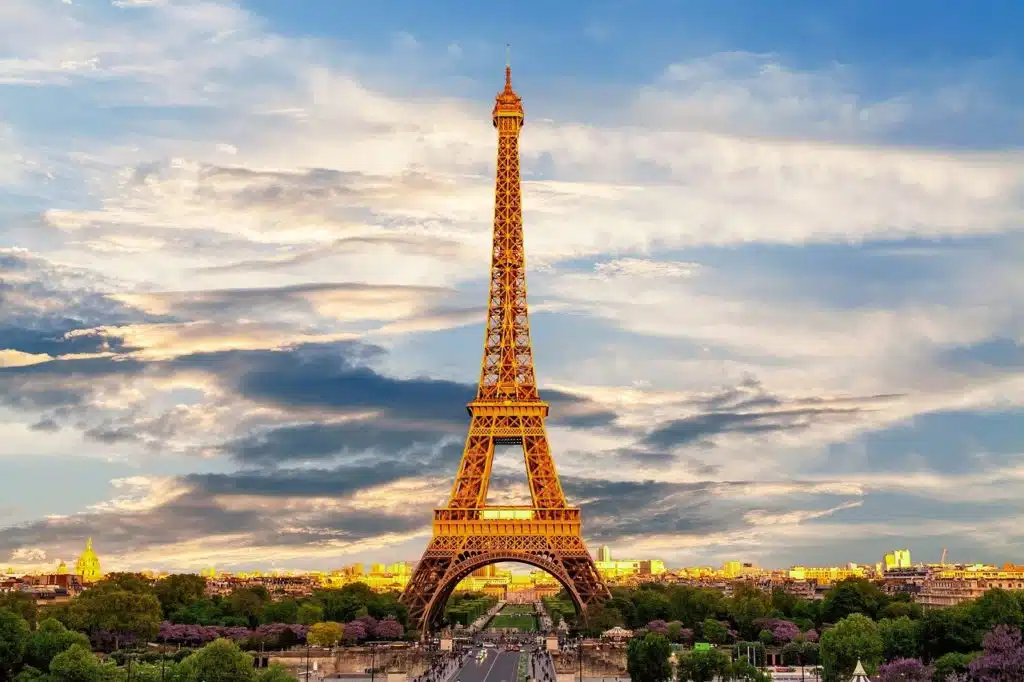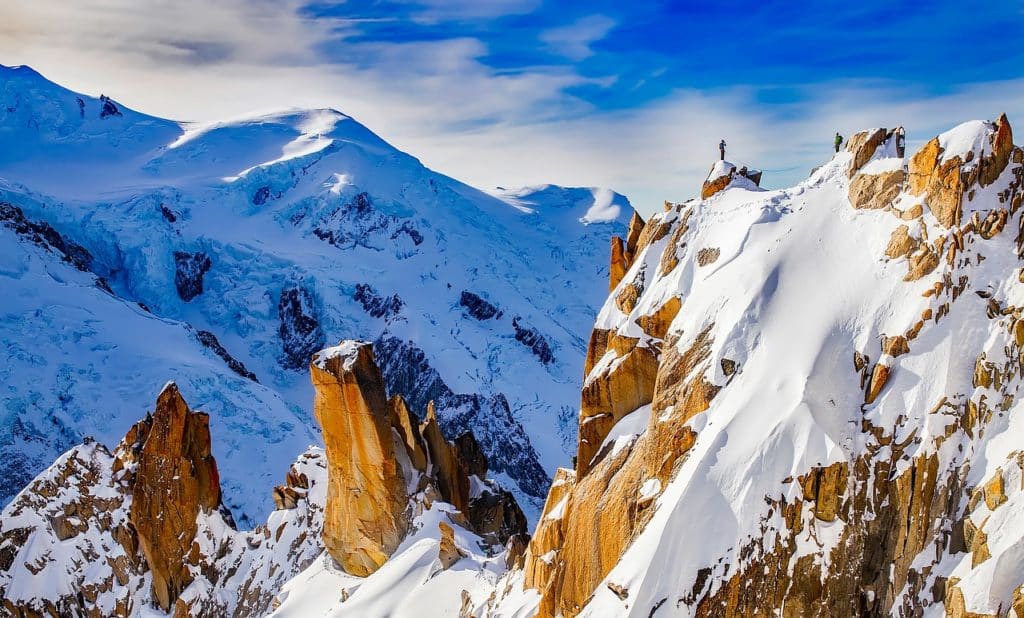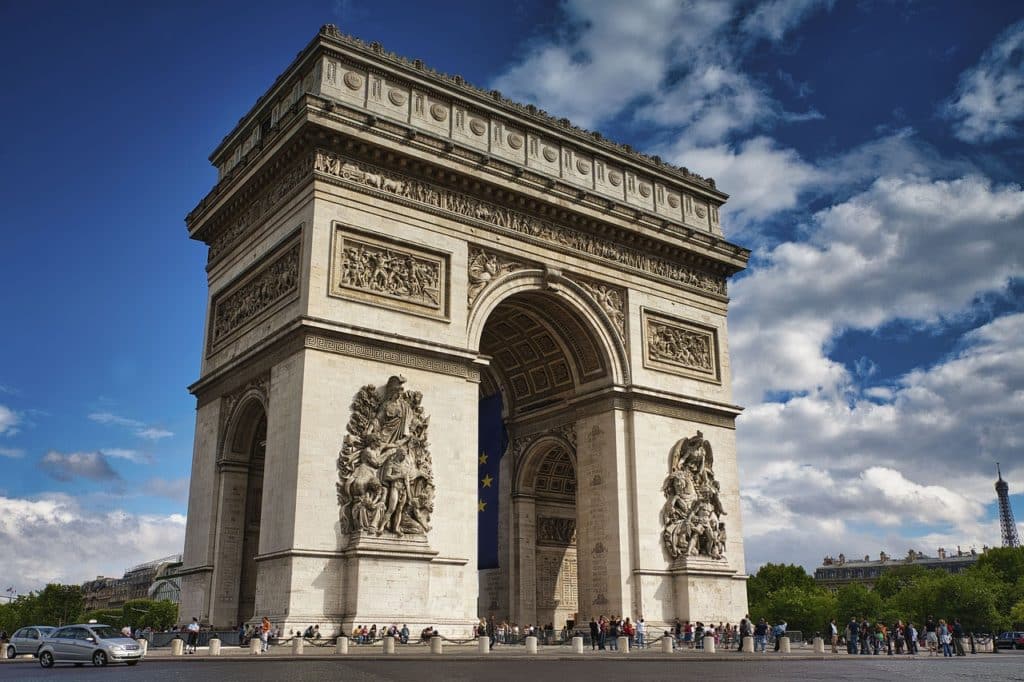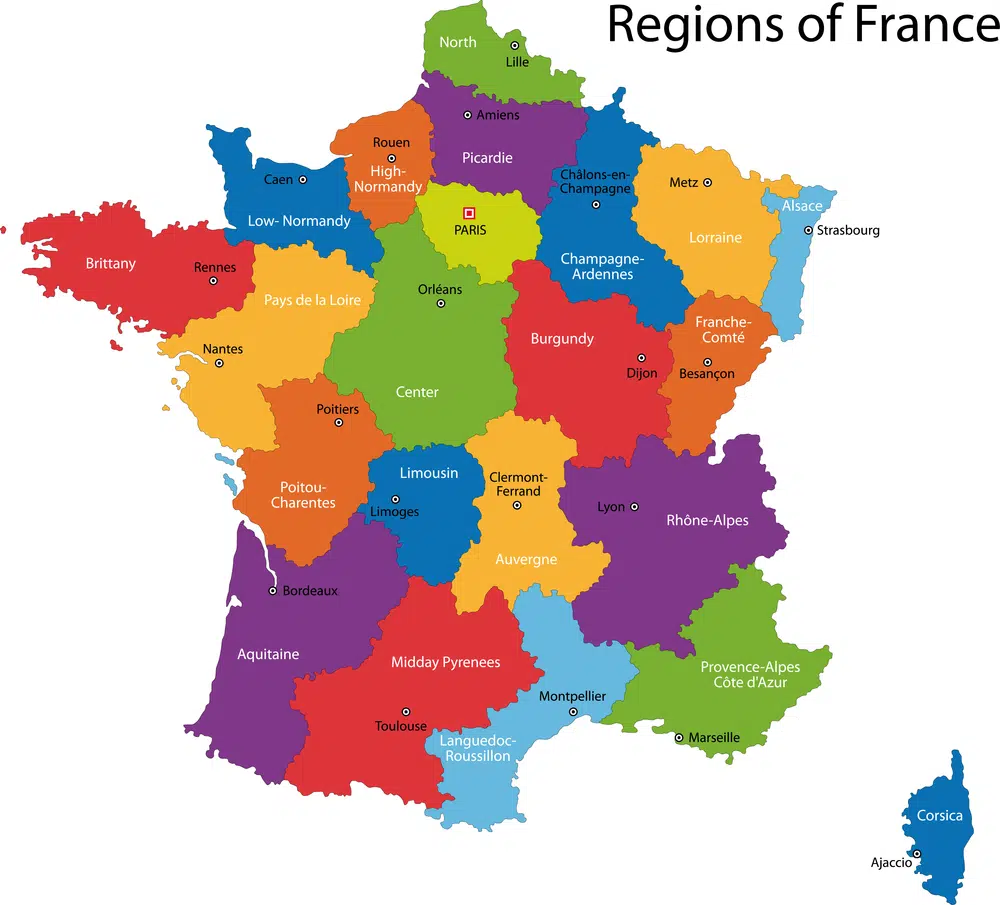If you want to know why France is so popular, prepare for an avalanche of reasons. France attracts people from near and far with charm, sophistication, and style. Annually attracting millions of visitors, tourism accounts for over one million jobs and billions of pounds in revenue. In 2018, France beat Spain as the world’s most popular country.
Of course, everyone knows about grand Paris, which has intrigued everyone throughout history. But France is about much more greatness, from European finesse, wine-producing vineyards, and delicious food to the exclusive French Riviera. Collectively, all these places present a country that captivates mainstream travel markets. Let us look at the reasons for the popularity of France.
Why France is so Popular
1: Paris -City of Lights
Of course, we must talk about Paris because roughly 30 million tourists yearly descend on this European capital. Evoking images of romance, Paris, a popular honeymoon destination, includes architectural landmarks like the iconic Eiffel Tower, Louvre Museum, Champs Elysées and Arc de Triomphe. Paris’s version of Disneyland also attracts European families who want time-honoured family fun but can’t travel to America. The French Government rules from Paris, and everyone has seen the iconic images from the world war. Here are some interesting facts about Paris:
- The Eiffel Tower – Perhaps the most iconic symbol of Paris is the Eiffel Tower, built in 1889 by Gustave Eiffel and standing at 324 meters tall.
- The Louvre – The Louvre features over 38,000 objects, including many priceless works of art, like the Mona Lisa and Venus de Milo.
- Notre Dame Cathedral – This stunning 14th-century cathedral features Gothic architecture, beautiful stained-glass windows, and historic bell towers.
- Champs-Élysées – This famous avenue of Paris features high-end shopping, restaurants, and nightlife. It is also where the annual Bastille Day military parade takes place.
- River Seine – The 777-kilometre Seine River runs through the heart of Paris and attracts people for romantic walks, boat rides, and picnics.
- Fashion – Paris features famous fashion houses and designers like Chanel, Dior, and Yves Saint Laurent.
2: Diverse Landscapes and Multi Seasons of France
France offers various popular landscapes, whether sailing, exploring countryside’s dotted with chateaus, soaking up history, or lying on sandy beaches. But do not forget the majestic, high French Alps or numerous cities, each with unique urban ambiences. To understand the pure beauty, look at Province, Loire Valley’s lavender fields or the rolling French Alps mountain ranges.
France’s popularity as a year-round destination is thanks to the four seasons, which offer something to do, regardless of when you visit. Of course, during summer, everyone enjoys sailing and beaches. Still, spring and autumn promote outdoor exploration. Then, of course, winter kicks into touch with excellent skiing seasons and popular snowy landscapes.
Countryside’s are a popular lure for those who shun beaches for flora and fauna. Romantic visions of chateaux living boost thoughts of a rambling cycle ride down country lanes, rolling green fields, vineyards, and fresh countryside dairy products like cheese. Exploring small villages, each with old-style houses, provokes nostalgia for everything French.
3: Ideal European Location
France’s central position in Europe quickly shows why the country is popular with many Europeans. After all, none of us like an eight-hour flight, followed by three transfers to reach our chosen holiday destination, so France’s strategic geographical position shines through. This makes France a favourite for Brits who cross the channel while Germans cross the border. Furthermore, France shares borders with eight different countries, making the country a popular holiday and travel destination, especially during COVID when people drive here.
4: Popular French Cuisine
Speaking of cultural food, French cuisine commands international respect. Delicate French dining sets restaurants apart from other popular cuisines because emphasis focuses on taste and fresh ingredients, not food portion sizes. While time-honoured classic food dishes include onion soup, coq au vin, bourguignon, and souffle. Visiting France and tasting regional and local food dishes are surefire ways to gain weight. French people love the deliciousness of food and enjoy many opportunities to indulge.
5: Famous French Wine
So, naturally, fine food should be paired with delectable wines that sit nicely on the palette. Famous wine-making regions like Burgundy and Bordeaux attract millions of tourists annually. Consider popular wine brands like Cabernet Sauvignon, Chardonnay, Pinot Noir, and Sauvignon Blanc to understand why France piques peoples’ interest.
6: French History
If history interests you, France delivers bucket loads of exciting snippets, from the rioting French Revolution to Marie Antoinette to the French resistance during World War II. Start by exploring numerous UNESCO World Heritage sites, including medieval towns, majestic castles, churches, old forts, and unique landscapes. Then, if history is your passion, look into the French government, World War II, and the French Monarchy, and you will quickly learn more about this country.
7: Art Lovers Haven and Creative Inspiration
We have all heard about the famous art Louvre Museum, Mona Lisa, and her smiling face. But French art is about more than this smiling woman. They say creativity drives the heart, and France delivers bountiful art inspiration for writers, musicians, and artists. Alongside modern sources of creativity, European inspiration reflects through artisans like Victor Hugo, who wrote the famous Hunchback of Notre Dame. Finally, let us not forget young Picasso. Granted, he was Spanish, but he spent much time in France, using aspects of the country to produce exceptional work.
8: The Popularity of the Palace of Versailles
This former royal palace on the outskirts of Paris attracts respect from around the world for its grand architectural styles and political history. Approximately 15 million people visit Versailles Palace annually, making the landmark building and former royal residence popular for tourism. Stroll around the main palace, separate kings’ rooms, gardens, and parks. Still, for an enhanced experience, book guided tourism tours to learn about the juicy secrets of past French royalty.
9: The South of France – French Riviera
Fronted by the Mediterranean and Atlantic coasts, the Atlantic beaches are best in summer, given their location, but Mediterranean beachside vibes are yours from spring to autumn. However, the South of France, also known as the Mediterranean French Riviera or Côte d’Azur, is known for tourism, sunny beaches, warm climate, and glamorous resorts, and has been a popular Mediterranean vacation destination for both French and international tourists for many decades.
The South of France includes the Mediterranean cities of Marseille, Nice, Cannes, Antibes, and Saint-Tropez. The region is also home to many picturesque villages, such as Eze, Saint-Paul-de-Vence, and Grasse, known for their stunning scenery and traditional Provençal architecture. Various civilizations, including the Greeks, Romans, and Moors, have inhabited the area over the centuries leaving behind rich European history reflected in museums, monuments, and art galleries. South France is also famous for European food and wine, which include regional specialities and famous wines, like rosé from Provence and reds from the Rhône Valley.
10: Famous Ski Resorts in the French Alps
France features highly popular ski resorts in the Alps, like trendy Courchevel, upmarket Val d’Isère and beautiful Tignes, with excellent skiing and snowboarding tourism. The prominent French Alps, including significant ski areas like Three Valleys and Espace Killy, attract beginners and experienced skiers as an Alps tourist destination with diverse resorts. Additionally, tourism opportunities for off-piste, heli and cross-country skiing make France an adventurous playground of Europe. Furthermore, France features several mountain ranges, the most famous and picturesque in Europe.
- The Alps – This European Mountain range extends over 1,200 kilometres across eight countries, including France, Switzerland, and Italy. In France, the French Alps cover an area of approximately 23,000 square kilometres and are home to many famous ski resorts, such as Chamonix, Val d’Isère, and Courchevel.
- The Pyrenees – This 400-kilometre mountain range forms natural borders between France and Spain and features several famous peaks, including Pic du Midi de Bigorre and Pic du Canigou.
- The Massif Central – This French Mountain range covers approximately 85,000 square kilometres. It includes several sub-ranges, like the Cévennes, the Monts du Cantal, and the Monts du Forez, with rugged beauty and diverse wildlife.
- The Vosges – This Eastern France mountain range sits near the border with Germany and stretches for approximately 150 kilometres. It has several famous peaks, like Grand Ballon and the Hohneck.
11: French Republic Festivals
France delivers many festivals revolving around European history, culture, art, food, and traditions. Significant examples include Berck-sur-Mer Kite Festival, Menton Lemon, the famous Cannes Film Festival, and Bastille Day. Also, join France’s numerous public and national holidays like Bastille Day. The French government doesn’t need reasons to announce cultural festivals for the country; there is always something to celebrate.
12: Major Cities in France
When asked to name famous cities in France, most people of Europe respond with Paris city. Yet, many more urban landscapes make perfect city break destinations. As France’s oldest city, Marseille features the famous Basilica of Notre-Dame-de-la-Garde, a Romano-Byzantine church and city symbol. Bordeaux City delivers refined, regional gastronomy and French restaurants serving gourmet delights. Lyon’s nickname, “capital city of lights,” refers to the four days Fete des Lumieres festival. Plenty of other cities like Nice attract ex-pats looking to live in the country. Read more about major cities in France.
13: The Popularity of France and French Culture
So, mannerisms, culture, accent, and language collectively form an overall impression of the French Republic that begs us to learn more about this country. Daily society in France combines an excellent work-life balance that enjoys more refined things. Diversity makes France and the French people stand out. Whether you want to live in quiet off-the-beaten-track locations, in major cities or travel around, the reasons France is so popular are apparent to see.
14: UNESCO World Heritage Sites
The French government dedicates itself to 45 UNESCO World Heritage Sites that include….
- Mont-Saint-Michel and its Bay: A rocky island off the coast of Normandy with a medieval abbey perched on top.
- Palace and Park of Versailles: A lavish palace built by King Louis XIV and his successors, surrounded by beautiful gardens.
- Roman Theatre and Triumphal Arch of Orange: A well-preserved Roman theatre and triumphal arch in the city of Orange.
- Caves of Lascaux: These prehistoric caves in Dordogne feature early examples of human art.
- Pont du Gard is an impressive Roman aqueduct bridge spanning the Gardon River in southern France.
- Avignon: The historic centre of Avignon, including the Palais des Papes and the Pont d’Avignon.
- Strasbourg: The historic centre of Strasbourg features picturesque half-timbered houses and a beautiful cathedral.
- Lyon: The old town of Lyon is famous for its narrow streets and beautiful Renaissance architecture.
- Bordeaux: The historic city of Bordeaux boasts elegant 18th-century architecture and beautiful public spaces.
15: France and the European Union
France is a founding country of the European Union, an economic and political union of 27 member countries. The EU was established with the Treaty of Rome signed in 1957, and France was one of six original permanent members. Since then, France has played a significant role.
As a member EU country, France benefits from the free movement of goods and services. In addition, the EU has also provided funding for various country projects and initiatives in France, including country infrastructure and education.
France has strongly advocated international affairs for a united Europe and has played active roles in European Union policies and institutions. The EU institutions they belong to include the European part Commission, the European Parliament, and the European Court of Justice.
France has also been at the forefront of efforts to deepen economic and political integration within the European Union with other countries, including creating a euro currency and developing common foreign and defence policies. France’s relationship with the EU and other countries is essential.
16: Interesting Country Facts
- France, the largest country in the European Union, covers 643,801 square kilometres.
- French, the official country language of France is also spoken in Canada, Switzerland, and Belgium.
- European France is famous for wine, cheese, fashion, and cuisine, including croissants, baguettes, and escargots.
- The French Revolution in 1789 was a significant turning point in French history. It significantly impacted the country’s politics, society, and culture.
- France has been home to famous European artists, writers, and thinkers, including Claude Monet, Vincent van Gogh, Victor Hugo, and Albert Camus.
- The French economy is the world’s sixth largest, with vast industries such as aerospace, pharmaceuticals, and tourism.
- The country’s vast French educational system includes top universities like the Sorbonne in Paris.
- France’s high country standard of living and culture includes an excellent healthcare system, and generous social welfare, like universal healthcare and paid parental leave.
- As of 2021, the population of France is approximately 67 million people. This makes France the 21st most populous country. The population density is relatively high, with an average of 118 people per square kilometre.
- France is bordered by several other Western Europe countries, including Belgium, Luxembourg, Germany, Switzerland, Italy, Spain, and Andorra. France also has a long coastline along the Atlantic Ocean and the Mediterranean Sea. The Mediterranean sea area is known as the French Riviera and is synonymous with luxury living. Whereas the silver coast is on the western edge.
17: Overseas Regions of France
- France has five overseas departments, which are part of the French Republic and outside Europe. They are:
- French Guiana: On the northern coast of South America, French Guiana is the largest and most populous overseas region. Its capital is Cayenne.
- Guadeloupe: This Caribbean Sea archipelago comprises several islands, the largest of which is Basse-Terre. The capital is Pointe-à-Pitre.
- Martinique: This eastern Caribbean island, Martinique, is part of the Lesser Antilles. The capital is Fort-de-France.
- Mayotte: In the Indian Ocean off the Mozambique coast, Mayotte is the smallest overseas region. Its capital is Mamoudzou.
- Réunion: This Indian Ocean island, east of Madagascar, Réunion is part of the Mascarene Islands. Its capital is Saint-Denis.
All regions are part of France, and their residents are French citizens. They are governed by the same laws and political system as the rest of France. Still, they are geographically distant from Europe and have unique cultural backgrounds. The overseas regions of France have a total population of over 2.7 million people, contributing to the diversity of French culture.
18: What is Metropolitan France?
Metropolitan France refers to the part in Europe, excluding overseas regions and territories. Hence, it is called mainland France or simply France. Metropolitan France includes the capital city, Paris, and other major cities like France’s oldest city, Marseille, Lyon, Toulouse, and Nice. It covers approximately 551,695 square kilometres and borders Belgium, Luxembourg, Germany, Switzerland, Italy, Spain, and Andorra. It is the economic, cultural, and political centre.
19: Famous French Prime Ministers
- Georges Clemenceau: Served twice, from 1906 to 1909 and from 1917 to 1920. This charismatic leader played vital roles in leading France to victory in World War I.
- Charles de Gaulle: Served twice, from 1958 to 1959 and 1962 to 1969. He was also the president of France from 1959 to 1969. De Gaulle is an important figure in French history, having led the country through profound change and modernization.
- Pierre Mendès France: Served from 1954 to 1955. This reformist leader introduced significant changes to French politics and economics, including ending the Indochina War and establishing welfare.
- Michel Rocard – served in the French parliament from 1988 to 1991. He was a Socialist politician who modernized the French economy and improved social welfare programs.
- Lionel Jospin: Served from 1997 to 2002. He was a Socialist politician known for his commitment to social justice and environmental protection in the country.
Also About France
Regions of France: Altogether, the country of France covers 550,000 square kilometres, borders two seas and an ocean, and includes five mountain ranges of Europe. Before 2015, there were 22 French regions, but some merged, and now there are 13 and five overseas regions. This article looks at the central 13 areas within France, and the popularity.






